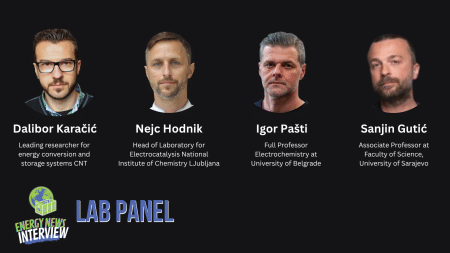Pep Malagrava, the European Commission’s Director General for Energy and Climate Change, unveiled the ‘Power to Green’ project in Brussels on Monday, which will bring the Lloseta green hydrogen plant to life, as part of the European Hydrogen Week 2021.
According to a press release from the Ministry of Energy Transition, Productive Sectors, and Democratic Memory, the meeting included personalities such as Ursula von der Leyen, President of the European Commission; Frans Timmermans, Vice-President of the European Commission; and Thierry Breton, current European Commissioner for Internal Market and Services.
In this regard, Malagrava has communicated the government’s desire to be “the spearhead” of this technology in Spain and the Mediterranean, allowing it to continue promoting the shift in energy and production models, and has announced that the green hydrogen plant in Lloseta will produce the first molecule in Spain in 2021.
“The first thing I’d want to mention is that the hydrogen plant in Lloseta, which was funded by the European Union, will be able to create renewable hydrogen this year, making it the first in Spain and on a southern European island,” Malagrava said.
In this regard, the general director emphasized that the facility, which is located in the heart of Mallorca, receives “a direct subsidy from the European Union” and would be able to raise “almost 50 million euros in total.” “We’re dealing with significant figures in our industrial economy,” he said.
According to the Department, this facility will create 300 tons of green hydrogen per year, all of which will be produced entirely from solar plants, and CO2 emissions will be decreased by 20,700 tons per year.
In a monoculture economy like the Balearic Islands, Malagrava also stated that this commitment to green hydrogen is just the tip of the iceberg of a plan that extends beyond decarbonization and the battle against climate change. “This plant has positioned Mallorca and the Islands in Europe as a benchmark in energy transition innovation,” he added.
Official figures show that the northern economies, which are more industrialized, are rebounding from the COVID shock faster and better than countries depending on tourist monoculture, according to a government spokesman.
“The conversion of the Lloseta cement mill into a hydrogen generation facility, as a strategic initiative, makes a lot of sense,” according to Malagrava.
Finally, Malagrava stated that the government “wants the Balearic Islands to be a region where the European Commission can continue to engage in industrial initiatives focused on energy transition innovation that can be replicated across Europe to meet climate goals.”
Transición Energética, on the other hand, has stated that the green hydrogen plant will help retain more than 70% of the energy utilized in the Islands on its territory and will provide supply resilience in the event of a supply crisis.
“For the time being, production will be utilized, among other things, for land transport,” says Malagrava, “but the future looks promise in terms of usage in aviation and ocean travel.” Hydrogen will also be utilized to provide cold and heat for the island’s industries, government administration, and lodging businesses.








